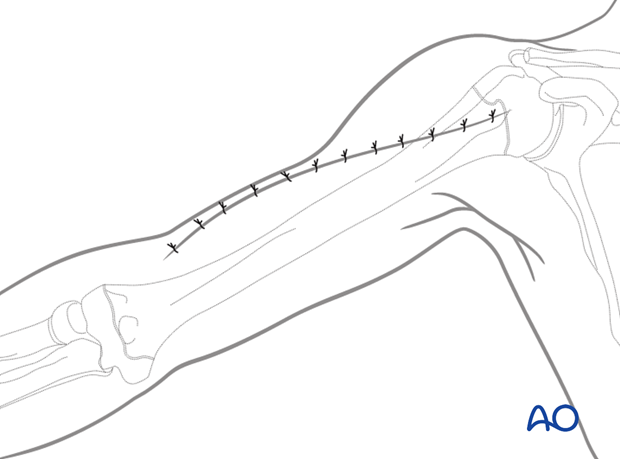Anterolateral approach to the humeral shaft
1. Introduction
Plating of proximal humeral shaft fractures may be performed through an anterolateral approach (the distal extension of the deltopectoral approach).
This approach can be extended distally for midshaft fractures.
2. Skin incision
The incision follows a line extending from the interval between the biceps and the mobile wad (brachioradialis and the wrist extensors) distally to the deltopectoral interval proximally, following the lateral edge of the biceps and the anterior edge of the deltoid. The incision may also be performed from proximally to distally.
Minimize any detachment of subcutaneous tissue from the muscular fascia. Deep dissection can be continued to provide safe exposure of the bone while protecting surrounding soft tissues.
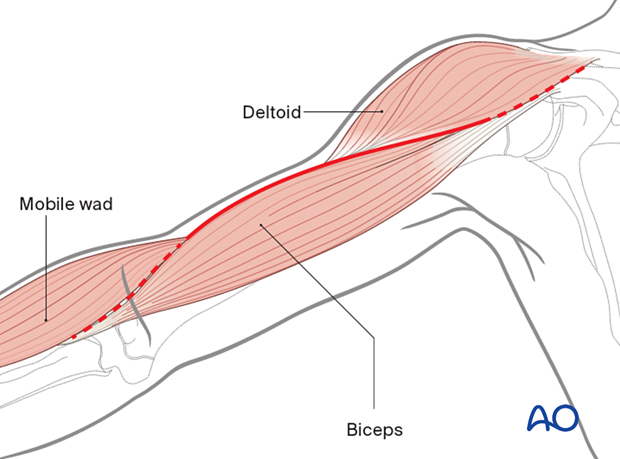
3. Superficial dissection
Incise the fascia carefully between biceps/brachialis and the mobile wad and extend proximally.
Identify the lateral cutaneous nerve of the forearm crossing distally. The radial nerve is deeper. Identify the nerve in the interval between the biceps and the mobile wad and follow proximally as the incision is developed.
If the incision is extended proximally, identify the cephalic vein in the deltopectoral interval. If it is retracted with the deltoid, muscular tributaries are less likely to be torn.
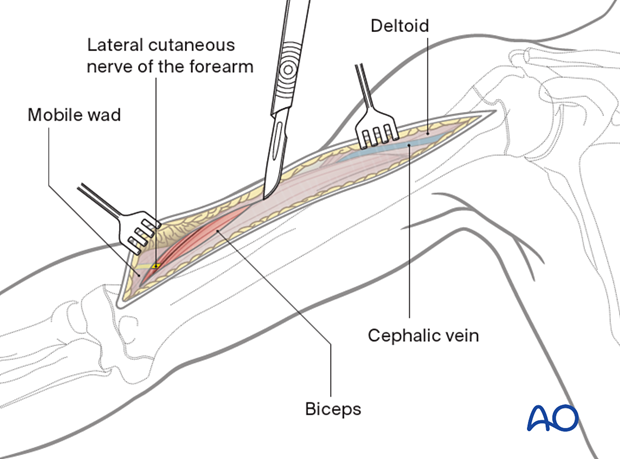
Retract the biceps medially, and the mobile wad laterally to identify the radial nerve. The brachialis is now exposed.

4. Deep dissection
Dissect the brachialis within the neurovascular plane between the radial and the musculocutaneous nerves to maintain innervation of the brachialis.
If necessary, release some of the muscle attachment proximally to allow the plate to lie on the bone.
Extend the dissection proximally, as needed, to the anterior border of the deltoid and along the deltopectoral interval.
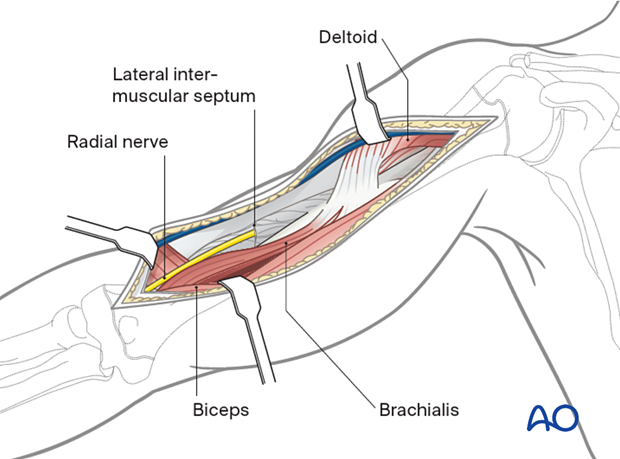
Alternatively, the brachialis may be retracted medially, but this may injure the radial innervation to the brachialis.
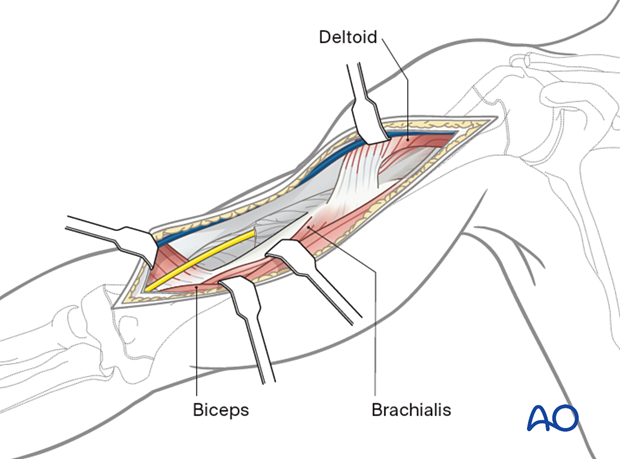
If proximal exposure is needed, partially release the deltoid insertion anteriorly and retract laterally to access the proximal humerus.
Alternatively dissect bluntly under the central deltoid insertion to allow for plate placement.
Leave as much muscle attached to the bone as possible to preserve vascularity and reattach the released portion at the end of the procedure.
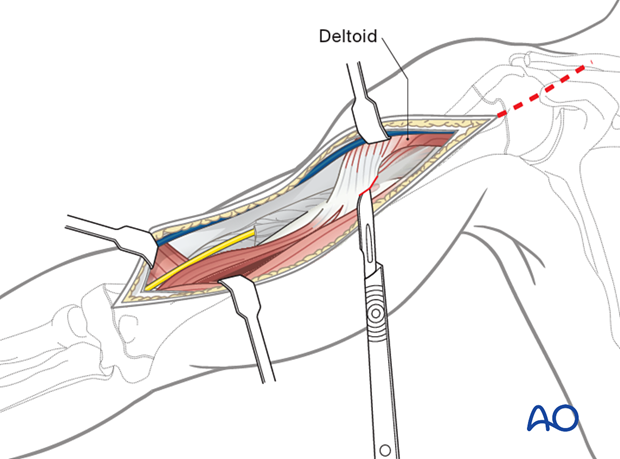
If distal exposure is needed, expose the humerus to the elbow joint between the mobile wad and brachialis.
Mobilize the radial nerve, as needed, to access the bone. Follow the nerve to the point where it passes through the lateral intermuscular septum.

5. Pitfall: injury to the radial nerve
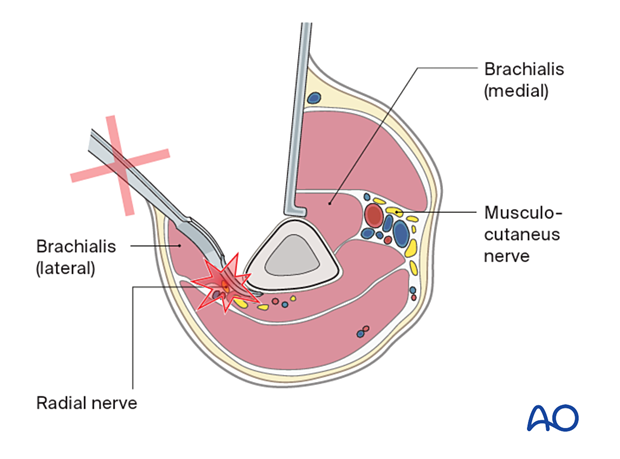
6. Wound closure
Irrigate the wound.
Close the subcutaneous tissues and the skin in layers with absorbable sutures in a standard manner.
